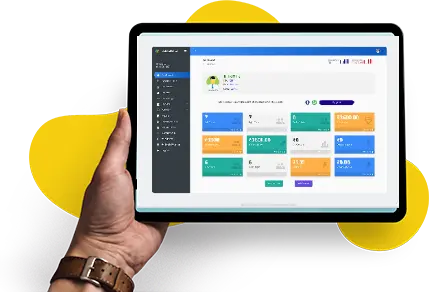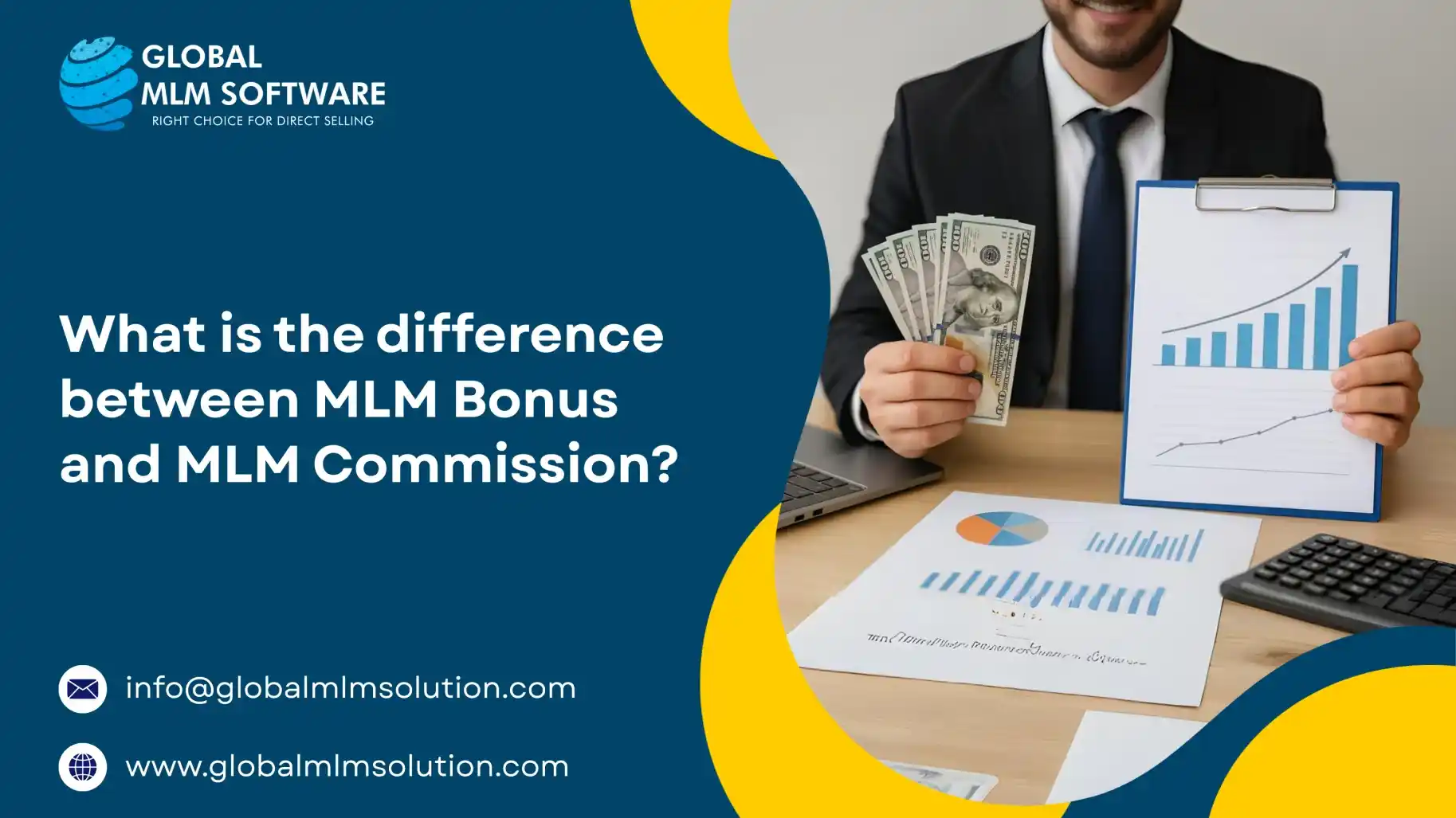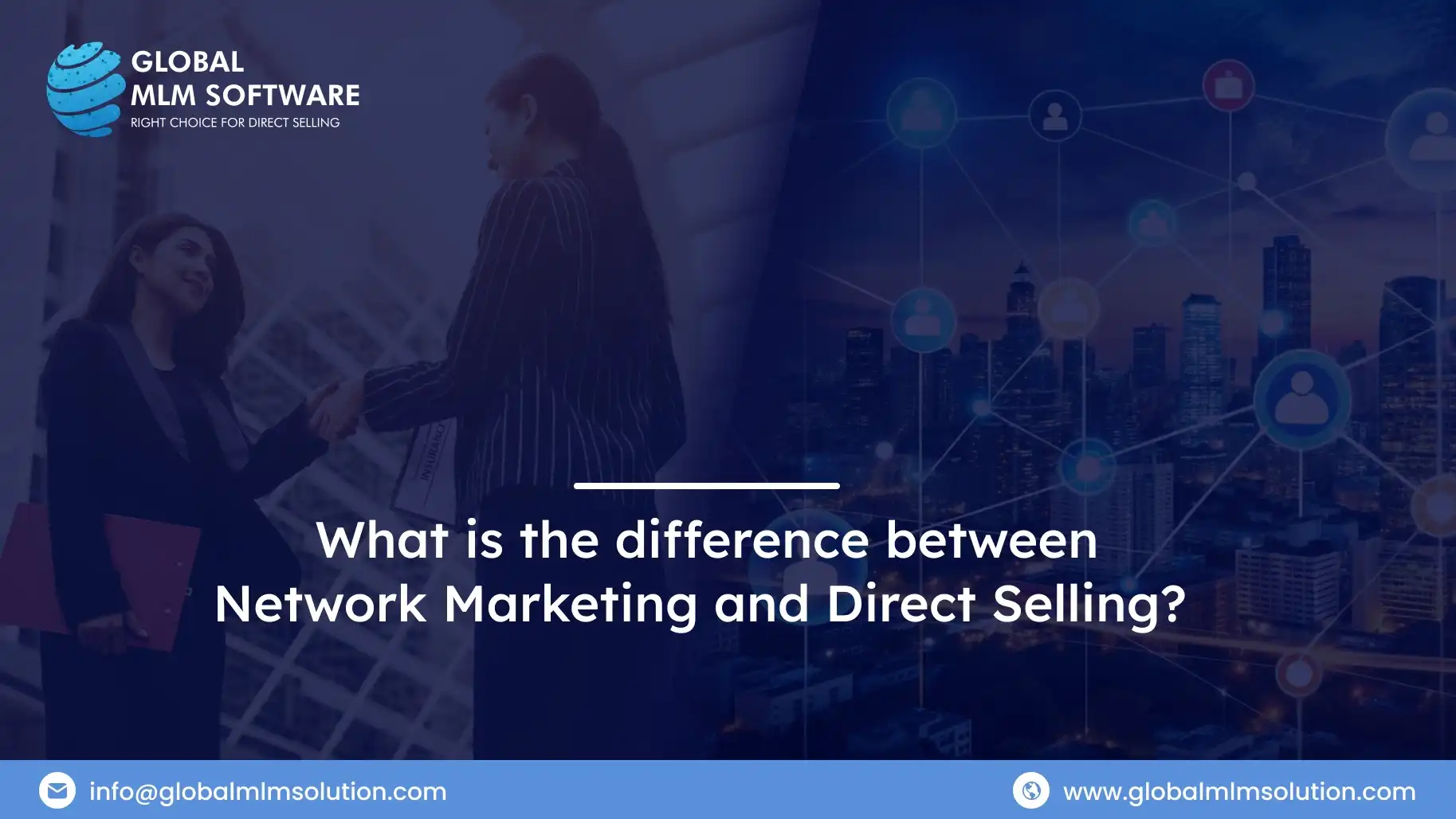Are you considering direct selling and direct marketing as synonyms? If you are, then it’s a big gap in the understanding, as they aren’t the same.
Yes, they serve the same purpose of connecting companies with customers without traditional retail intermediaries. However, the method of doing so is different; it starts from the very core.
In this blog, we’ve explained what direct selling and direct marketing are, their common differences, and how you can use them.
So, read on to understand the difference between direct selling and direct marketing and build a sustainable MLM business.
This Article Contains:
What is Direct Selling?
Direct selling is a business model in which products or services are sold straight to the consumer through a network of independent sellers. There’s no requirement for a fixed retail outlet to sell products. The distributors use face-to-face selling, home parties, one-to-one appointments, or online social selling to generate sales.
The core features that attract brands to use direct selling are low fixed overhead, personal selling, and a reliance on direct relationships rather than shopfront traffic. For example, an independent consultant can host a party at home for skincare product demonstrations and sell directly to interested people. For every successful sale, the distributor earns a margin or commission, based on the company's compensation plan.
To understand it simply, visualize this: Manufacturer (Direct selling company) → Direct seller (Distributors) → Consumer
Direct selling is of three different types:
Single-tier: A single salesperson sells to customers and earns commission or margin on their own sales only.
Two-tier: Salespeople earn on their own sales and receive a smaller override on sales made by distributors they directly recruit (one level down)
Multi-level marketing (MLM): Commissions flow across multiple levels (a “downline”); earnings can include direct sales commissions, overrides, team bonuses, and residuals. This has many structures, such as Binary, Hybrid, Matrix, and Unilevel.
Key note: direct selling is a low-cost method to reach a wide customer base. But success depends on genuine product demand and clear, compliant compensation plans rather than excessive emphasis on recruitment.
The popular examples of direct sales companies are:
Amway: A health and beauty products MLM company.
Herbalife: Selling health supplements, food, and drinks via a network marketing model.
doTerra: Well-known for its MLM health and wellness products.
What is Direct Marketing?
Direct marketing is a promotional strategy where businesses communicate directly with potential customers using both face-to-face and non-face-to-face channels. These include:
Email
Postal mailers
Telemarketing
SMS
Targeted digital ads
landing-page campaigns
Pop-up stores
Physical events
Billboards
Home-based parties
Its strength is precision: messages are tailored to specific audiences, tracked for response, and optimized for measurable outcomes (open rates, CTRs, conversion rates, cost-per-lead).
Direct marketing is used by both traditional companies and direct-selling firms. Retailers such as Lands’ End and national banks routinely use targeted catalogs and personalized email offers. Credit card issuers send pre-qualified mailers and segmented email campaigns.
Likewise, direct-selling brands (for example, Mary Kay or Tupperware consultants operating in the US market) combine personal selling with digital direct marketing. You can think of automated email sequences, Facebook/Instagram lead ads, SMS reminders, or localized postcards, used to generate interest and sales. Not just that, the offline methods of direct marketing like pop-up stores, billboards, or parties are also used.
Direct marketing is therefore a technique, not a business model. Even a distributor in a network-marketing business will often run a Facebook lead ad that directs prospects to a landing page offering a free sample. The landing page collects an email, triggers an automated nurture sequence, and eventually converts a portion of those leads into customers or recruits for the distributor’s downline.
Lastly, effective direct marketing depends on list quality, clear offers, compelling calls to action, and legal compliance (for example, CAN-SPAM and TCPA rules in the US). When executed well, it amplifies personal sales by filling the top of the funnel with qualified leads.
Direct Selling vs Direct Marketing: Major Differences
By now, it must be clear to you that direct selling is a business model, whereas direct marketing is a marketing technique. But is that the only difference? Not at all! Here are a few others.
| Factor | Direct Selling | Direct Marketing |
|---|---|---|
| Approach | Selling products or services personally to the consumer without intermediaries. | Promoting products or services directly to consumers to generate a response or sale. |
| Communication Style | Interactive and conversational, where messages are adapted in real time to the prospect. | Personal and message-driven, where communications are prepared in advance and aimed at measurable responses. |
| Primary Goal | To close a sale through personal interaction with the consumer and build customer relationships. | To generate leads, prompt inquiries, website visits, sales, sign-ups, and promote the brand using online and offline communication methods. |
| Geographic Reach | Usually local or regional, largely depending on the network of distributors and their mobility. | Regional to global, as digital and postal channels can scale to reach vast audiences beyond individual sales territories. |
| Scalability | Growth requires team building and training more people, as only then can more sales be generated, so scaling is labor-intensive and depends on distributors' efforts. | It’s a highly scalable marketing technique as the same message can be delivered to large audiences with automation and media spend. |
| Brand Control | Messaging varies with each independent seller. The brand needs to maintain consistency through regular training, MLM distributor scripts, and incentives. | Centralized creative control lets the company tightly manage tone, offer, and positioning. Even the face-to-face direct marketing communication is controlled centrally to avoid legal issues. |
| Cost Structure | Higher variable costs as the brand has to pay commissions, provide samples, arrange events, distributor support, host seminars, trainings, and award functions. | Higher upfront/fixed costs, as there are ad spend, list purchase, platform fees, billboard rent, event organization costs, but has lower marginal cost per contact, especially with mass outreach. |
| Customer Relationship | Stronger, trust-based relationships that often drive repeat sales and referrals. | Usually transactional at first, relationship strength depends on follow-up and nurturing. |
| Conversion Rate | Typically higher per contact due to personalized interaction and demonstrations. | Often lower per contact, but can deliver large volumes of leads that convert at scale. |
| Post-Sale Interaction | Follow-up is personal but inconsistent, and it depends on the distributor's initiative. | Ongoing, automated post-sale communication through digital media such as emails, retargeting, and CRM workflows, managed by the company. |
How Businesses Can Use Both Direct Marketing and Direct Selling Together?
When you combine direct selling with direct marketing, you're basically building the perfect sales machine. Think of it this way - direct marketing fills your funnel with qualified prospects, and then your distributors work their magic to actually close those deals and build real relationships.
Here's how to make it work:
Start with Clear Roles and Goals
First things first - everyone needs to know what they're responsible for. Your direct marketing should focus on lead volume and keeping that cost-per-lead reasonable. Meanwhile, your sellers need to nail their demo-to-sale conversion rates and boost that average order value.
Let’s take an example. Suppose you have a healthcare MLM business and you want to get more sales. You can organize a marathon event, with at least 300 participants as a target.
As this will be an offline event, your distributors can use direct selling (the face-to-face method) to pitch the participants about your products. Therefore, the goal for them is clear: to convert the leads in the marathon event.
But how do you get the participants? That’s where direct marketing will help you. You need to provide clear roles to the marketing team to promote the marathon event through both offline and online methods.
Therefore, by setting such clear parameters on how to use both direct selling and direct marketing in your favour, your MLM brand can generate more sales without extra effort.
Smart Lead Generation That Actually Converts
Here's where most companies make mistakes. They drive traffic to these overcomplicated landing pages that confuse everyone. Don't do that.
Instead, keep it simple and add one clear offer, minimal form fields, and then immediately tag those leads by location and buying intent.
Here’s a workflow that works and you can use: Instagram lead ad → clean landing page offering a free sample → tag as "sample-request" →automatically assigned to the closest seller within 10 miles. That’s it, your work is done.
Nurture Without Overdoing It
Nobody wants 15 emails in their inbox. A short, sweet nurture sequence of 3-5 messages does the trick. Educate them a bit, ask two qualifying questions (budget and timeline, that's it), then get them connected with a real person for a demo. When they get in touch with distributors and experience that personal connection, the chances of conversion become higher.
Give Your Sellers the Right Tools
Your independent sellers aren't tech wizards, so keep their tools simple. Mobile CRM, pre-written MLM scripts, and an easy calendar booking platform are more than enough. In lead generation and conversion, speed matters. If your distributors are responding within 24 hours, it can literally double their appointment rates.
Attribution and Optimisation
Tag leads with UTM (Urchin Tracking Module) parameters and CRM labels to track which creative, audience, or channel produced in-person sales.
Monitor CAC (Customer Acquisition Cost) by channel, lead → appointment rate, appointment → sale rate, AOV (Average Order Value), and LTV (Lifetime Value).
Most importantly, don’t forget to run weekly A/B tests on landing pages and subject lines to make sure your messaging is on point.
Post-sale Retention
This is where the real money is! Post-sale retention is crucial to increasing the revenue of your business by targeting the existing customers. Therefore, you need to implement direct selling and direct marketing to create a solid strategy that focuses on conversion.
To achieve this, you can create a referral program. You can use direct marketing methods such as creating a landing page, promoting it using email blasts, or using in-app notifications. Your communication can include the incentives that customers will receive once their referral reaches out to the distributor and makes a purchase.
Similarly, the role direct selling has to play is to personally handle all the referrals and try to convert them into customers. They can do this via telecommunication, or if a large number of referrals comes for nearby areas, the distributors can host a party to demonstrate products.
Tech Stack That You Can Use
You need a landing page builder, an MLM CRM that works on phones, email/SMS automation, your ad platform of choice, and a simple MLM software with a dashboard to track results. You can start small in one region, measure everything, then scale what's actually working.
The key? Don't try to do everything at once. Pick one region, nail the process, then expand. Most businesses that fail at this try to go nationwide on day one and end up with a mess they can't manage.
Here’s an example explaining the usage of the direct selling + direct marketing merger:
A brand runs Facebook ads for trial kits. Leads go through a 4-email sequence, and the hot prospects get connected with nearby sellers for demos. After purchase, automated emails and personal follow-ups from sellers keep customers buying and referring friends.
Additionally, CAN-SPAM and TCPA suggestions we provided above aren’t just fancy terms; they're the law you must follow. Maintain explicit opt-ins for email and SMS, provide clear unsubscribe options, and keep consent records for telemarketing.
You must train your distributor regarding the same, so when they use direct selling, they stay compliant. Failing to comply with these rules means hefty fines that can cost you millions.
Conclusion
Many entrepreneurs assume that direct selling and direct marketing are rivals. However, they’re complementary.
Direct marketing isn’t about lobbed ads and crossed fingers. It’s a systematic way to find, attract, and pre-qualify prospects. At the same time, Distributors do what machines can’t: improvise, build trust, and close the deal in person or over a call. That human touch matters. It converts curiosity into commitment.
When you combine them, you get a repeatable and scalable engine. Use direct marketing to fill the top of the funnel with interested, vetted leads; hand those leads to your distributors and independent sellers to run demos, answer doubts, and follow up. The result is wider reach, higher conversion per contact, and fewer cold calls.
FAQs
1. What are the key benefits of Direct Selling for an MLM business?
The primary benefits of direct selling or direct-to-consumer marketing for MLM businesses are:
Lower business setup costs, as the MLM brand uses independent sellers on a commission basis instead of paying permanent sales teams.
Local sellers already embedded in communities let you test and scale in new areas without opening stores.
Personal demonstrations and one-to-one conversations typically convert better than cold digital leads.
Ongoing relationship management by distributors drives repeat purchases and referral sales.
Growth is amplified when one productive seller builds their team and others expand reach without proportional company headcount increases.
2. What are the key benefits of Direct Marketing for an MLM business?
The key benefits of direct marketing are:
Precise Targeting
Personalized messaging
Measurable Results
Improved Customer Relationships
Cost-Effectiveness
3. What are the main challenges and limitations of Direct Selling for the MLM business?
The primary challenges of direct selling for an MLM business are to recruit new distributors and retain them. Other challenges include compliance and reputation management, operational efficiency, keeping distributors motivated, and updating the compensation plans.
4. What are the main challenges and limitations of Direct Marketing for MLM business?
The limitations of direct marketing for MLM businesses include:
High competition for attention: Customers’ inboxes, phones, and feeds are crowded, making it harder for MLM messages to stand out.
Lower personal connection: Unlike face-to-face selling, direct marketing lacks the emotional trust and relationship-building that drive conversions.
Compliance risks: Strict regulations (CAN-SPAM, TCPA, GDPR) limit email blasts, telemarketing, and SMS campaigns; one misstep can lead to fines.
Data dependency: Success relies on clean, segmented prospect lists; poor data leads to wasted spending and low-quality leads.
Disclaimer: Global MLM Software do not endorse any companies or products mentioned in this article. The content is derived from publicly available resources and does not favor any specific organizations, individuals or products.









